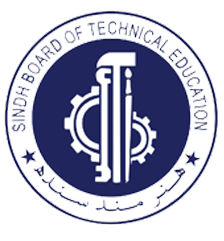
Greenwich Global College, mandated by the Sindh Technical Board, offers two years diploma in Textile Fine Art with a focus on craftsmanship that leads to the equivalence of NVQF Level 5 / Intermediate. The diploma is designed according to market demand and will fill the education industry’s central gap.
It is equivalent to inter and is recognized by Sindh Technical Board and Inter Board Committee of Chairmen (IBCC).
GGC provides an excellent platform for kinesthetic learners who need help clearing their intermediate examinations quickly.



| Term | Code | Course Title |
|---|---|---|
| 01 | GFP106IT | Introduction to Textile |
| 01 | GFP105HAC | History of Art and Culture |
| 01 | GFP204DFP | Digital Fashion Pro |
| 01 | GFP107BD | Basic Drawing |
| 02 | GFP202UR | Urdu/Native Language |
| 02 | GGPR4202 | National Studies & Religious Education |
| 02 | GFP101EN | English |
| 02 | GFP102IS | Islamic Studies |
| 03 | GFP204PD | Print Design |
| 03 | GFP207SA | Sculptor Art |
| 03 | GFP104IS | Introduction to Surface |
| 04 | GFP206DS | Design Studio |
| 04 | GGIP9001 | Internship |
| 04 | GFP205BI | Brand Image |
1. Enable students to present facts in a systematic and logical manner.
2. Meet the language day-to-day demands.
3. Inculcate skills of reading, writing and comprehension.
1. Classify Elements and Principles of Art.
2. Making models with 2D and 3D material.
3. Creating artwork with the understanding of practices from previous eras.
1. Demonstrate the ability to evaluate visual information and compare diverse perspectives.
2. Conduct market surveys, workshops and visits to enhance their exposure relation to the commercial field.
3. Apply fundamental craft skills to complement traditional and modern techniques and implement comprehensive textile repeated creation and development of motif.
4. Design skills to design textiles through demonstrating basic skills in drawing, lay-outing, repeat creation, and color application.
1. Conduct structured research; analyze cultural and aesthetic trends, both historical and contemporary, on textile surface design products and use the information to develop creative design concepts.
2. Think critically, including evaluating visual information, comparing diverse perspectives, coming to fundamental conclusions and interpreting information to produce original designs for appropriate textile markets.
1. Classify concept of pillars of Islam.
2. Contextualize Salah and importance of ablution(Wadu).
3. Develop a concept of importance of Holy book and basic concepts of Islam.
1. Present facts in a systematic and logical manner in Urdu language.
2. Meet the Urdu language day-to-day demands.
3. Inculcate skills of reading, writing and comprehension in Urdu.
1. Critically evaluate the various dynamics and processes related to the study of History.
2. Gain familiarity with key primary sources and academic studies on different aspects of South Asian history in general, and Pakistan in particular.
3. Critically read and analyze texts on history.
4. Develop an ability to challenge meta-narratives of history.
1. Classify cultural and aesthetic prehistorical, culture, art, and innovations in pottery, color palettes, sculptures, region, religion, weather etc.
2. Contextualize design within the broader framework of historical, political, and cultural shifts.
3. Analyze texts (verbal, written, visual etc.)
4. Discover and expand on analytical and lateral thinking techniques.
5. Evaluate research skills and presentation skills and develop teamwork skills.
6. Create designs by using historical facts and driving innovations from different Eras.
1. Find theoretical and practical principles, emerging trends, and issues pertinent to textile design and related industries.
2. Relate structured research; analyze cultural and aesthetic trends, both historical and contemporary, on drawing and sketching.
3. Classify the concept of drawing and study its implementations in the field.
4. Apply fundamental craft skills to complement traditional and modern techniques and the ability to apply comprehensive drawing and sketching techniques.
1. Conduct structured research; analyze cultural and aesthetic trends, both historical and contemporary, on textile surface design products.
2. Think vital, including the ability to evaluate visual information, compare diverse perspectives, come to fundamental conclusions and interpret information to produce original designs for appropriate textile markets.
3. Enhance exposure and relation to the commercial field through market surveys, workshops and visits.
1. Classify the basics of design and explore textures, colors and types of compositions and the role of design principles around us. Also, to develop a better understanding of students towards the practical approach of elements and principles of design.
2. Apply fundamental craft skills to complement traditional and modern techniques and ability to apply comprehensive textile and fashion design skills to design their product through developing skills and demonstrating digital skills for designing logos, flyers, brochures, brand names, visiting cards, marketing campaigns etc.
1. Understand, creation of different structures or make a fabric with different styles.
2. Conduct structured research; analyze cultural and aesthetic trends, both historical and contemporary.
3. Textile surface design products and use the information to develop creative design concepts.
4. Acquire knowledge of specific fabric in a particular product.
| Description | Currency | Amount |
|---|---|---|
| Application Fee | PKR | 2000 |
| Admission Fee (One Time) | PKR | 50000 |
| Security Deposit (One Time, Refundable) | PKR | 20000 |
| Term Fee | PKR | 100000 |
| Board of Technical Education Registration Fee | PKR | 21000 |
| Following Fee are charged where applicable: | ||
| * Duplicate Identification Card Fee | PKR | 1500 |
| * Rechecking of Examination Fee | PKR | 500 |
| * Late Payment Surcharge | PKR | 5000 |
| * Marksheet Issuance Fee | PKR | 2000 |
| * Diploma Issuance Fee | PKR | 2000 |
| Important Note: 1. No payment will be accepted at any institute. 2. All payments are to be made in person at the bank or online payment methods via GGC Website. 3. All invoices must be cleared on time, students with outstanding dues will not be allowed to attend classes. 4. Fee structure is subject to change before beginning of the academic year. 5. Fee are non-refundable and non-transferable. 6. Fee paid on monthly basis will have additional charge of 10% on the invoice amount. 7. Fee above 200,000PKR is subjected to 5% Advance Tax u/s 236 or Income Tax Ordinance. | ||
GGC provides knowledge and confidence students need to embark on their study abroad journey by familiarizing them with academic standards of the international education system; offering students advanced placement opportunities at top international universities.
© Copyright Greenwich Global College 2024. All Rights Reserved
The photographs / Videos used in the website are of Greenwich Global College’s Students, Faculty and Management.